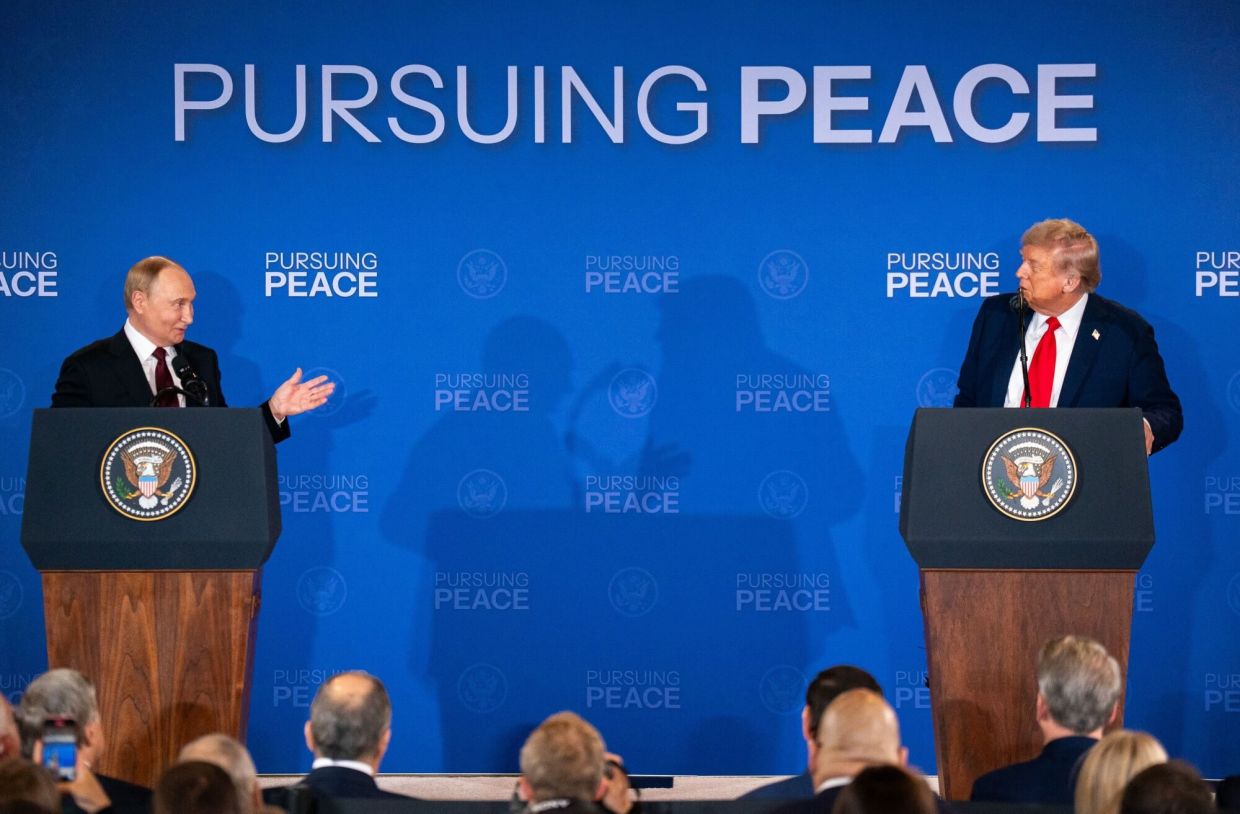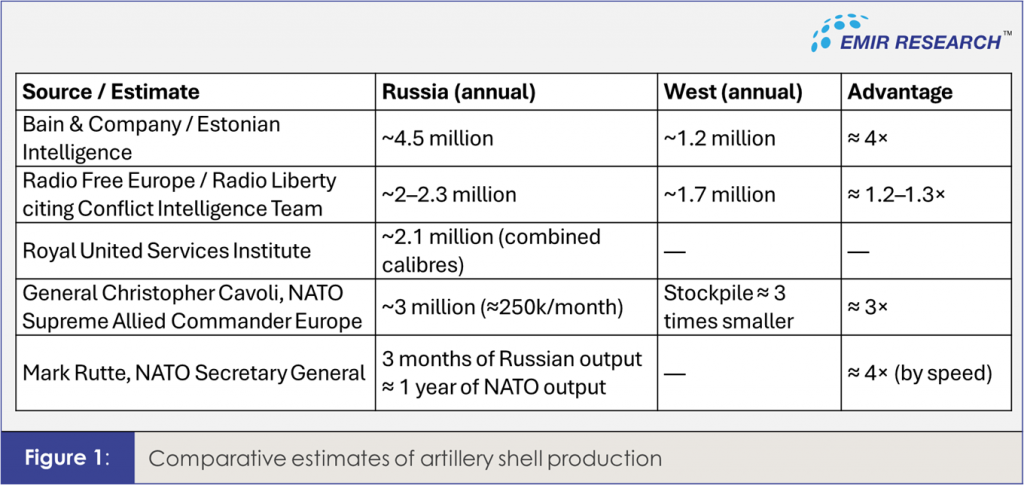
Published by TheStar and AstroAwani, image by TheStar
That negotiations now unfold directly between Washington and Moscow speaks volumes: the war in Ukraine was never only about Kyiv, but about a proxy confrontation with the West, led by the United States and its military–industrial complex. For Russia, this is not a shift, but a continuation of the position long anchored in the Minsk II Agreement — that the root causes lie not in Donetsk or Luhansk, but in the West’s refusal to respect agreements, sovereignty, and civilizational diversity.
However, beyond that the danger of nuclear war today lies less in open confrontation than in the internal incoherence of the two nuclear superpowers. America is paralyzed by a war machine its president cannot control; Russia by elites who sabotage sovereign resilience. It is this double incoherence that makes the summit necessary — not as theatre, but as an existential guardrail.
The urgency behind the Trump–Putin summit, as it appears, does not lie in Moscow but in Washington. It is telling that Trump’s representative, Witkoff, was in Moscow only days before the meeting was arranged and the speed with which the summit followed shows that it was the U.S., not Russia, pressing for haste.
Trump himself seemed to reveal as much. Announcing the meeting, he declared: “I will see Putin, I’m going to Russia on Friday.” The press rushed to call it a slip of the tongue, since the talks are scheduled for Alaska. But the symbolism and irony could hardly be clearer. Trump’s words revealed what the West, of course, prefers to obscure: this meeting is not simply Putin stepping onto American ground, but a dialogue taking place in a borderland where history itself refuses neat ownership.
As EMIR Research continuously emphasized, the U.S. is governed by a president who does not fully control the machine of state, hemmed in by a military–industrial cartel that feeds on perpetual war (refer to “Endless Wars, Two Americas, One Failing Machine”, “From Tweets to Tectonics: NATO’s Void and the Global South’s Rise”). The U.S. has become a state that no longer negotiates in good faith. Treaties are abandoned not because presidents will it, but because the inertia of its war economy demands constant escalation. Congress legislates by procurement, budgets expand automatically, and a sprawling complex of defence contractors and intelligence agencies defines foreign policy more than the elected executive.
Trump’s problem is that he cannot fully control this system. He can promise peace to his base, but the machinery of conflict continues without him.
By contrast, Russia does not approach this summit out of urgency. Its strategic stance has been consistent since the Minsk II accords, endorsed by the United Nations Security Council but sabotaged by the West. Despite Wests misleading framing, Moscow was never a party to Minsk agreement but the guarantor — seeking to prevent escalation, not to impose conditions (refer to “Russian-Ukrainian Conflict: Deconstructing Minsk Agreement Truthfully”).
For Moscow, the greatest threat is not sanctions, nor NATO’s endless arms transfer to Ukraine.
Russia alone has withstood the collective West with remarkable industrial resilience, a fact that exposes the hollowness behind Western bravado about the size of their bubble economies as measured by GDP.
This resilience is not abstract, it is measurable. Estimates vary, but the conclusion is the same: Russia is producing artillery shells at a pace that vastly outstrips its adversaries. Depending on the source, annual Russian output is placed between 2 and 4.5 million rounds, while combined U.S. and European production rarely exceeds 1.2 to 1.7 million. The result is a structural imbalance: Russia manufactures at least twice as many shells as NATO countries and in some scenarios, up to four times more (Figure 1).

Yet industrial strength alone cannot shield Russia from the elements of internal sabotage, obviously not independent of U.S. industrial-military cartel. The Russian Central Bank’s insistence on keeping interest rates at a crippling 18 percent is emblematic. In an economy already cut off from the global banking system, there is no structural obstacle to lowering borrowing costs dramatically, even to near-zero. Instead, rates remain pinned far above national growth sustaining a regime where finance thrives while industry and defence production suffocate.
This is not an arcane debate about monetary policy. In wartime, such decisions signal that Russia’s ability to retaliate with full sovereign coherence may be constrained. That perception is precisely what makes nuclear miscalculation possible — the illusion that a strike might not be answered in kind. It is the only condition under which the West, for all its rhetoric of ‘deterrence,’ would risk the unthinkable. After all, it is the West, and only the West, that has used nuclear weapons, and only when certain the adversary could not respond.
The logic of summitry in such conditions is not cosmetic. It is existential. Nuclear deterrence depends on clarity. When internal sabotage in Russia and institutional inertia in America both undermine that clarity, the risk of catastrophe grows.
That is why this meeting could not be reduced to a phone call, or to the theatre of envoys. Only in person can the leaders of both states assert the minimum control required to coordinate and stabilize.
The way the meeting was held, its outcomes, and the sense of perplexity across Western media reaffirm that this was never really a Ukraine-focused ‘negotiation.’ The BBC admitted that ‘with no ceasefire and an invitation to Moscow, the meeting has yielded more questions than answers.’ CNN stressed that ‘there was no deal made.’ The Guardian called it ‘a PR victory for a dominant Putin,’ while even the Atlantic Council conceded that Russia offered no concessions yet left stronger.
Trump may present this as proof that only he can bring ‘peace,’ but for Russia it is a consistent pursuit of sovereign dignity and multipolar balance. The war may be the stage, but the drama is about U.S. weakness, Russia’s resilience, and the existential risks created by systemic incoherence on both sides. The summit did not create peace, but if it restores just enough coherence to avoid catastrophe, survival itself would be achievement enough — perhaps the only peace possible in an age of fractured empires.
Dr Rais Hussin is the Founder of EMIR Research, a think tank focused on strategic policy recommendations based on rigorous research.

